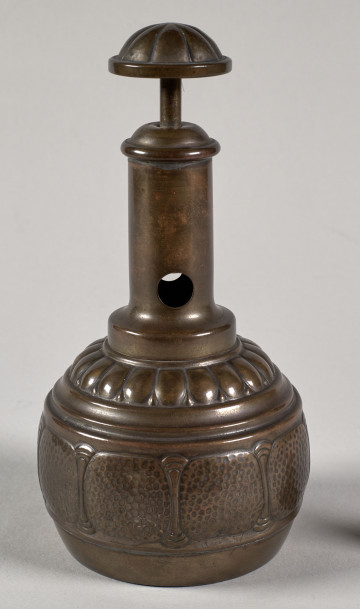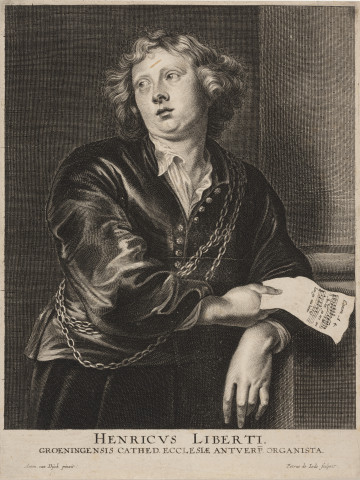
Cigar Cutter
XIX/XX wiek
Castle Museum in Łańcut
Part of the collection: Metals
Metal jewellery caskets are derived from large metal chests that began to be made in Nuremberg at the turn of the 15th and 16th centuries. Small jewellery caskets were ordered from artisans and jewellers by wealthy merchants and aristocrats who could afford to buy jewellery.
The casket in our collection comes from the Potocki collection, taken over after 1944. Its creation dates back to the nineteenth century. It is made of brass in the casting technique, so despite its small size, it is massive and heavy. The side walls and lid of the casket are decorated with figural scenes, which are separated by floral ornaments. Among them are depictions of saints, biblical or genre scenes. The casket stands on feet decorated with an openwork in the form of a single three-leaf clover. The sides of the lid are decorated with individual flowers at regular intervals. The lid is divided into four parts, whose shape refers to a Gothic window, and in each of them there are figures who, despite the division, form one scene. Between them, in the middle, there are two circles through which a massive handle with lily-shaped ends passes. The casket is equipped with a lock and its interior is lined with a red soft material. The lock protected the items hidden in the box from falling into the wrong hands, and the soft lining protected against damage to the hidden treasures.
Anna Szczęsny
Object type
metale
Material
brass
Creation time / dating
Owner
Muzeum - Zamek w Łańcucie
Identification number
Location / status

XIX/XX wiek
Castle Museum in Łańcut

Castle Museum in Łańcut

circa 1632
National Museum in Szczecin
DISCOVER this TOPIC
National Museum in Szczecin
DISCOVER this PATH
Educational path